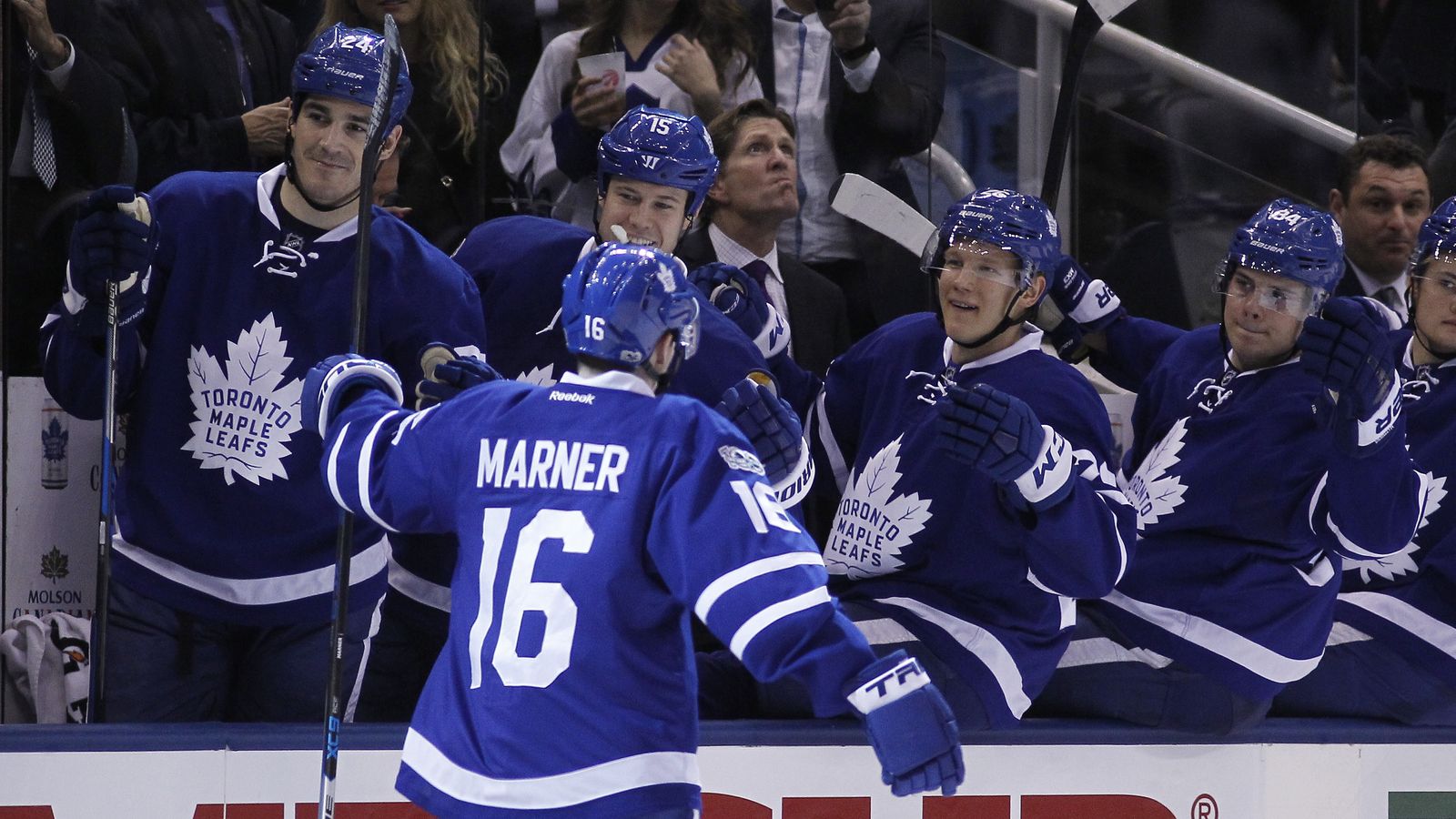15 games to go. A one-point hold on the final wildcard spot. Four points back of a top-three spot in the division, with an opportunity to play Montreal or Ottawa in round one. The end of the season is going to be a rollercoaster ride.
The Leafs have 76 points in the bank already and the playoff cut-off line looks like it will fall somewhere around 93 points (which is the Leafs current pace as they hold onto the final playoff spot in the East).
That would mean 17 points or so will be required in the final 15 games.
So how do those games break down?
They have eight games left at home, where they are 17-10-6, and seven on the road, where they are 14-12-8. There are three remaining sets of back-to-back games to go along with playing nearly every other night to end the season.
There are three types of opponents at this stage: non-playoff teams, playoff teams, and bubble teams.
| Non-Playoff | Bubble | Playoff |
|---|---|---|
| Buffalo (x2) | Florida (x2) | Columbus (x2) |
| New Jersey | Tampa Bay (x2) | Washington |
| Detroit | Boston | Chicago |
| Pittsburgh | ||
| Nashville |
It is a tough schedule on paper with few “easy” games, but the Leafs are actually a cumulative 15-4-3 against their remaining opponents so far this season. Seven of the next 11 games will be played on the road before a four-game homestand against Washington, Tampa Bay, Pittsburgh and Columbus to close out the season. Nothing can be taken for granted.
There are three other teams to keep an eye on right now: Boston is four points up on the Leafs with two more games played, while the Islanders and Lightning are each one point back with one more game played.
It will be a mad dash to the finish line – and battles against Tampa Bay and Boston, in particular, loom large – but the remaining schedule and amount of home games should have the Leafs feeling pretty good about their odds.
Notes
– One thing that stands out looking at the standings is that no other Eastern Conference team currently in a playoff position has given up more goals than the Leafs. Toronto has allowed 199 goals in 67 games, which ranks 21st in the league. Their goal scoring has slowed down a bit as they have dropped to sixth in the league in goals for. How their defense holds up down the stretch will probably be the storyline to watch in the final month.
– Six games into his Leaf tenure, Brian Boyle has primarily played with Matt Martin and Nikita Soshnikov. When Martin and Boyle are on the ice together, they have a 60 CF%, while Soshnikov and Boyle are at 66.3 CF%. With his reach and defensive instincts, Boyle is allowing Soshnikov and Martin to get in deep on the forecheck while he hangs back and protects them as the high forward. It has led to some great shifts of sustained pressure and physicality.
– The need for a proper fourth line center was a talking point all season; with Boyle in place, it has rounded out the forward group and given the Leafs a big unit capable of cycling teams, slowing games down, and grinding away. Boyle actually lost the faceoff leading to the Flyers 3-2 goal, but Babcock threw him right back out there between Matthews and Hyman. Babcock also used Boyle to center those two on a defensive zone draw with four minutes left in regulation against Carolina – they scrummed the draw and gained possession, and Boyle went straight to the bench and swapped with Brown while Gardiner held the puck behind the net. Against Detroit, the Matthews-Boyle-Hyman line got a shift together with roughly 2:30 left while protecting another one-goal lead. So, it looks like Babcock is swapping out Nylander for Boyle in defensive situations while the other two lines stay largely intact.
– That arrangement leaves Connor Brown with Kadri and Komarov. Interestingly, Brown has played with two centers primarily this season. In his 400 minutes with Matthews, the pair average 3.44 goals for per 60 minutes, 59% goals for, and a 48.9 CF%; they are a little more run-and-gun together. When Brown plays with Kadri, he averages 1.62 goals for per 60 minutes, 46.7% goals for, and a 50.4 CF%. Two drastically different styles of play, but Brown has fit in both roles well. He has become a good little rover/plug-and-play guy for the Leafs. With 15 goals and 28 points in 67 games, his rookie season would be getting a lot more love in a “normal” season.
– It seems like forever ago that Brown started the season on the fourth line. He worked his way up quickly, but he earned it.
– Brown, Zach Hyman and Nikita Zaitsev have all been key contributors this season and are all pending RFAs. It is not the time to start looking at what they may earn, but the direction the Leafs go in terms of the term of the contracts they offer will be interesting to watch. Hyman is turning 25 this year while Zaitsev is turning 26; these aren’t exactly young players.
Quotes
“The way he can receive it across his body and let it go in one motion. He actually, I think, shoots across his body better than he shoots the one-timer. He likes to touch the one-timer. He can really shoot that puck.”
– Mike Babcock on William Nylander’s shot.
I thought this was an interesting note considering how much time we have spent talking about William Nylander playing his off-wing on the power play. This line of thinking – and I would debate whether it’s true or not – certainly explains why the Leafs insist on having Nylander and Matthews play their strong sides on the PP. Nylander is tied for 16th in the league for PP points and the Leafs have the second best PP in the league, so there isn’t much of a leg to stand on complaining about it.
“I mean, everybody’s got little ailments at this time of the year so, I mean, you could probably ask anyone and there’s a few things that are bothering them, but you kind of forget about it during the game for the most part and battle through it.”
– Bozak, on his injured hand, at the start of last week
At times, Tyler Bozak has looked uncomfortable — as if he’s fighting the puck — but he has been fighting through it and actually has points in five straight games (seven total) with 13 shots on net.
“He probably shot 1,500 pucks a day when he was a kid. I have no idea. It’s pretty incredible how hard he shoots that thing. I remember, one of his first games last year, when I was with the Islanders, he shot one off the glass in overtime our whole bench kind of looked around and was like, ‘wow, that was pretty hard.’ Obviously, he’s a guy who can put the puck in the net so we just got to find a way to get it to him more.”
– Matt Martin on Nikita Soshnikov
Nikita Soshnikov does have a bomb. With that in mind, it would be nice to see him take more than 68 shots on goal in 52 games. Some of that can be attributed to his role and linemates. Turning 24, he has one more year left on his deal before he becomes an RFA. It will be interesting to see if the Leafs ever give him an opportunity to be anything more than a checker/energy guy.
Video Tidbit of the Week
I
Since January 31st, the Leafs have struggled on penalty kill, clicking at 75.5% — good enough for just 24th in the league. One reason why is that their PK units have loosened up in the neutral zone.
In this example, Soshnikov does a good job pressuring up ice, but Connor Brown leaves his spot too early, opening up the ice. If the forwards switch on the forecheck while on the penalty kill, the player switching out to play defense has to be far back enough and have the speed to get there. Here, Soshnikov has the speed, but the gap he is forced to make up is impossible to cover. When the pass gets through, it leaves the Leafs with two defensemen holding the blue line. It is far too easy to gain the zone cleanly against that. That little misstep set up a quick penalty kill, with the Leafs chasing the puck around the zone once Carolina set up.
Brown cheated to the wall, which left Teuvo Teravainnen wide open in the middle of the ice for a clear shot resulting in a goal, but the goal started in the neutral zone. The Leafs have gotten away from consistently stacking their blue line with three players across forcing dump-ins.
5 Things I Think I’d Do
1. With another three-game week coming up, I think Frederik Andersen has to start every game. We have discussed resting Andersen at length throughout the season — and at some point it will have to happen — but he looks great right now and the games against Florida and Tampa are going to go a long way in deciding whether or not the Leafs make the playoffs.
2. I think, as much as I thought he didn’t play great against Carolina, I’d give Martin Marinicin another game and see if he can get going a bit. It is easy to forget, but he had a good run of games earlier this year and he was also solid down the stretch last season playing alongside Polak. That would give the team some options once Carrick returns.
3. When Connor Carrick does return, I think I’d reunite him with Gardiner while running Marincin-Polak as the third pairing (although I’m sure the Leafs will continue to run Hunwick-Polak). Marincin has been a regular on the penalty kill in two seasons in Toronto so he can fill that role for Hunwick, plus he’s shown he can move up the depth chart adequately at times. He’s better in-game insurance than Hunwick in case of injury.
4. With Auston Matthews quiet lately (pointless in his last five games, 11 shots on goal), I think I would be looking to play Kadri more to help out. Kadri has averaged the fifth most ice time among forwards since 2017 started despite leading the team with 29 points in 32 games in that time. He can handle playing more than 16:57 per night, and frankly, they need him to.
5. I think it’s worth pointing out that Mitch Marner has 28 points in 27 games in 2017. I would still be looking to mix him in the odd shift with Matthews and Kadri throughout the games. He gives any line he’s on a spark and works well with everybody, which can make him a bit of a jump starter for other lines/players when they are struggling.



































